What’s that you say, “but it’s only a Ford”?
A Ford that sold for the mind-numbing figure of £596,250 with fees at Silverstone Auctions earlier this year, in fact – a record for the model. But that should come as no surprise really: The Ford Sierra Cosworth RS500 is no stranger to breaking records. That it became one of the most successful saloon racing cars of all time is only part of the story. What makes it so desirable is that (and the name gives it away) only 500 were built. And although Ford is a colossal company, the RS500 and the car from which it evolved, the Sierra RS Cosworth, were both developed by two very special engineering teams based in Essex.

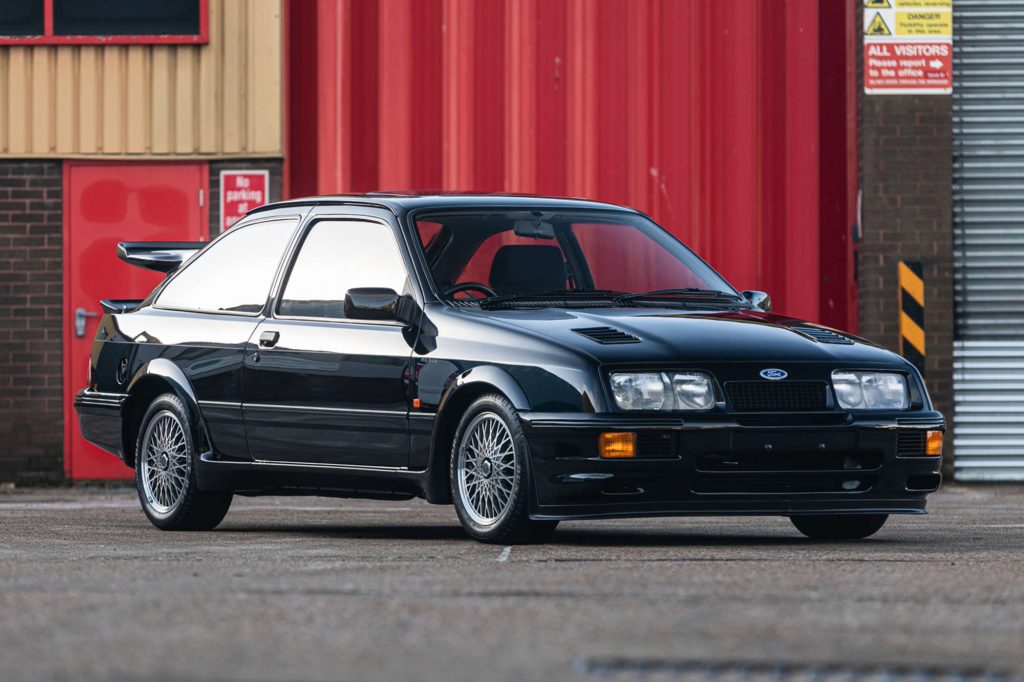
Ford Special Vehicle Engineering, where the Sierra Cosworth was created, consisted of just 34 engineers. Ford Motorsport, which prepared the racing versions, had only 32. Actually, the Cossie’s core engineering team was much smaller than that, as SVE boss, Rod Mansfied, told me when we met in 1987 to chat about the forthcoming RS500. “For a major project like Cosworth, 4×4 Sierra, or Scorpio,” he explained, “I need 10 engineers and on a rule of thumb basis, a minimum of two years. The most luxurious timing is nearer three, but the Cosworth was under two.”
Why were so few built? The original “Cossie,” with its famous whale tail, was a “homologation special” produced not as a boy-racer road car, but to make it eligible for Group A international racing, which dictated 5000 of the basic car must be built and sold. Taking a couple of standard Sierras and bolting on a huge spoiler and turbocharged engine to go racing just wasn’t allowed. The regulations said the features must be “homologated,” so included as standard on a production version anyone can buy. Group A regulations also allowed an “Evolution” version with further modifications, of which 500 were to be built and offered for general sale.
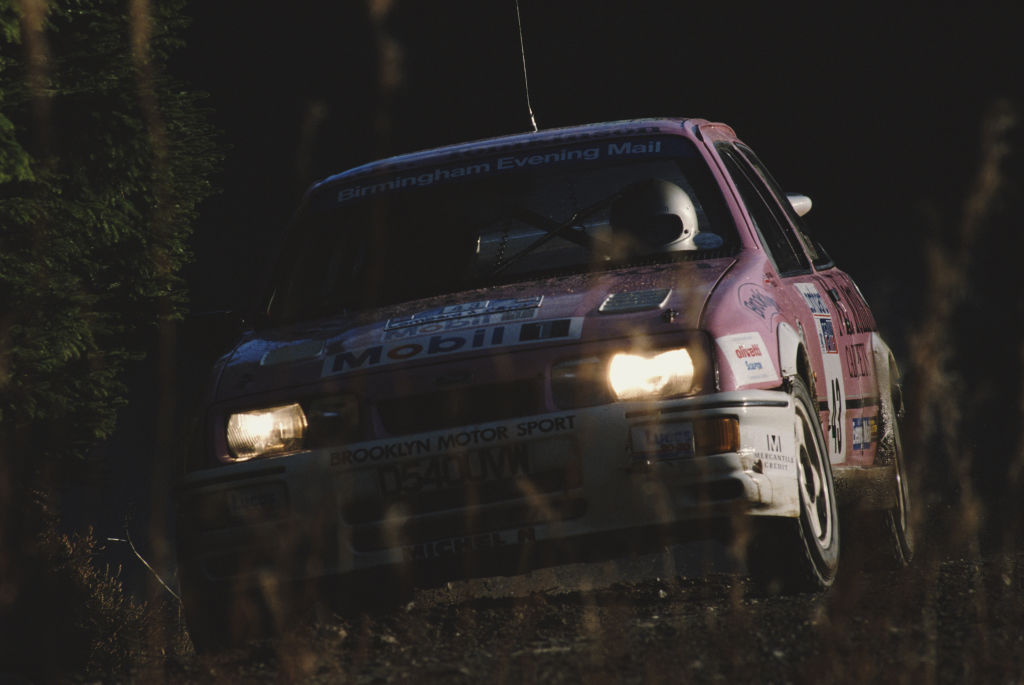
So the story of the RS500 started a couple of years before it was revealed in 1987 with the sensation that was the Sierra RS Cosworth. Two men were directly responsible for the hottest Sierra yet. The first was Stuart Turner, the recently appointed director of motorsport at Ford Europe. The second was Mansfield, head of Ford SVE. Both men already had a dazzling track record in delivering word-beating competition cars.
Turner headed the BMC competitions department in the Mini’s heyday when the Cooper S was beating all-comers in world rallying. Appointed Ford director of motorsport in 1970, he was largely responsible for the Mk1 Escort RS1600 (the first Ford RS homologation special) and its road-going spin-offs, the Mexico and RS2000. Later, he headed the special division set up in Essex to build them, Ford Advanced Vehicle Operations (FAVO). In 1983, he became director of motorsport at Ford of Europe and soon after, the Group B RS200 happened.
Mansfield became chief engineer at FAVO in April 1980 and took the helm of the new Special Vehicle Engineering at Ford Europe, based at Ford’s Research and Development headquarters at Dunton in Essex. SVE would develop the high-performance road-going cars, and Ford Motorsport, based at Boreham, would do the full-house race and rally cars. These included the Escort Turbo and Sierra 4×4. SVE had also been responsible for the Capri injection, the Fiesta XR2, and Escort XR3i.
Roll back the clock to the middle of 1987 again and Rod Mansfield was explaining to me how the Sierra Cosworth story had begun a few years earlier with a meeting in Stuart Turner’s office. “He just said, ‘what can we do?’ He realised SVE was the area to build him his basic vehicles. We had some marketing people there for a brainstorming session. Stuart said he needed something to go rallying with and needed something Escort, so the Escort Turbo was born. Then he asked what else we could do and the marketing people wanted support for Sierra. I mentioned the fact that there was a normally aspirated Cosworth engine around the place that might work for turbocharging and wouldn’t that make a nice car for touring car championships.”
The signature whale-tail spoiler of the Cossie that followed almost became something else. The motorsport people originally wanted it to be doubled-up with the main wing supplemented by an additional, small, bootlid spoiler. For whatever reason, possibly styling, it didn’t happen and the single version was adopted, producing 20kg of downforce at high speed. It was significant because during testing, the standard Sierra body shape, which had never been designed for that pace, generated enough lift to make the car unstable. The single whale tail combined with the low front spoiler fixed that, and fixed it well.
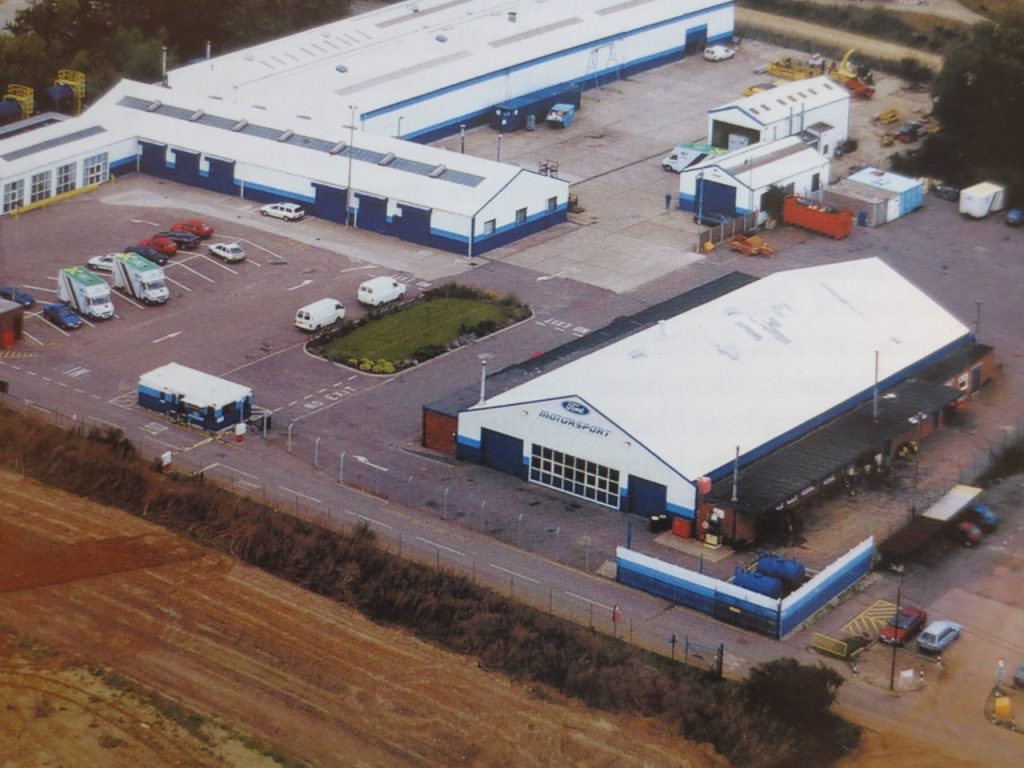
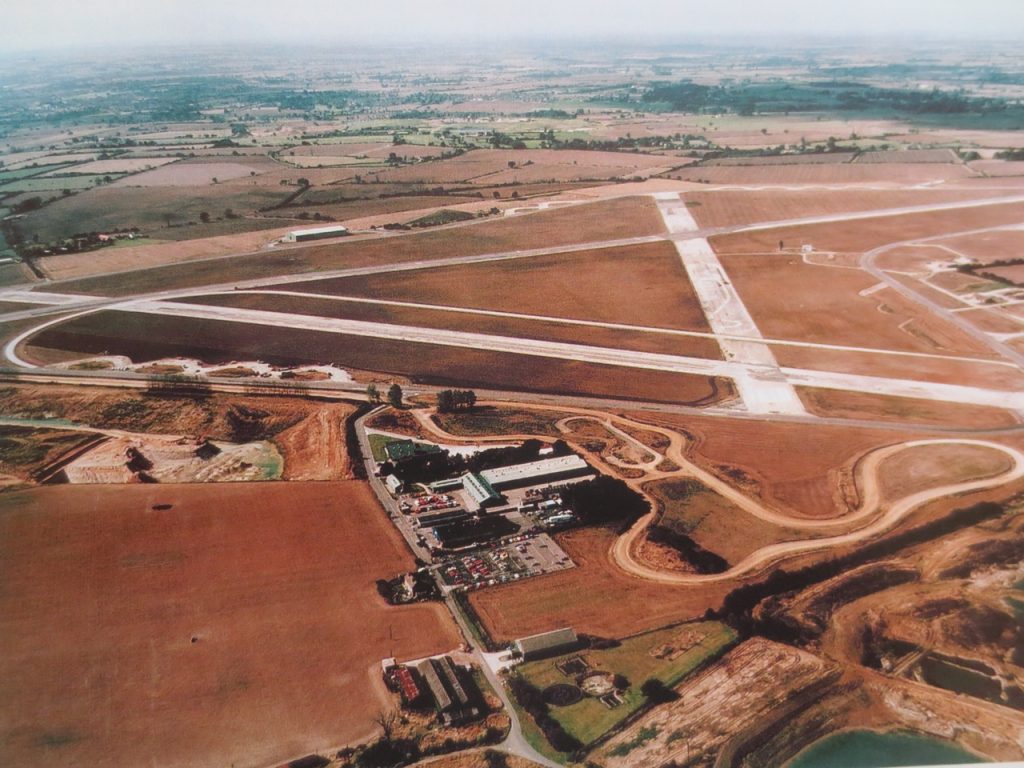
At around the same time, I paid a visit to the hallowed ground of Ford Motorsport at Boreham airfield in Essex, this time to meet Mike Moreton, the project manager of Ford Motorsport Europe. As if “Boreham,” as it was economically known, wasn’t legendary enough, its location in a former wartime RAF airfield and ramshackle appearance made it even more so. Moreton’s office wasn’t located in one of the glass towers you might expect for an operation that had dominated much of the world’s saloon-based motorsport for almost quarter of a century, but in a single-storey building made of wood. While the material side of the place may have been shaky though, the atmosphere made up for it, and the workshops where cars were prepared were impressively spacious.
The first thing I wanted to know was how powerful would this Sierra Cosworth evolution be? Moreton was coy, saying only that in international touring car racing, “it should completely dominate the class”. He also explained how the difference between it and the Sierra Cosworth wouldn’t be that great in road-going form. “In round figures, the car already does 150mph, is there any point in producing a car that does much more? A little extra speed was added to the specification, more to justify the extra cost than anything. Most of the changes to the evolution car were made to allow for the requirements of Group A and as Moreton explained, “the regulations forbid the adding of metal.”
That’s the best clue as to what the RS500 is like to drive as a road car, and in back-to-back testing with my original long-term test Sierra Cosworth, we found it disappointing. Why? Because most of the mechanical additions for Group A didn’t do anything on the road-going version and they weren’t expected to. Only when they were “actuated” in racing car form would the brutal reality of the difference they made hit home.
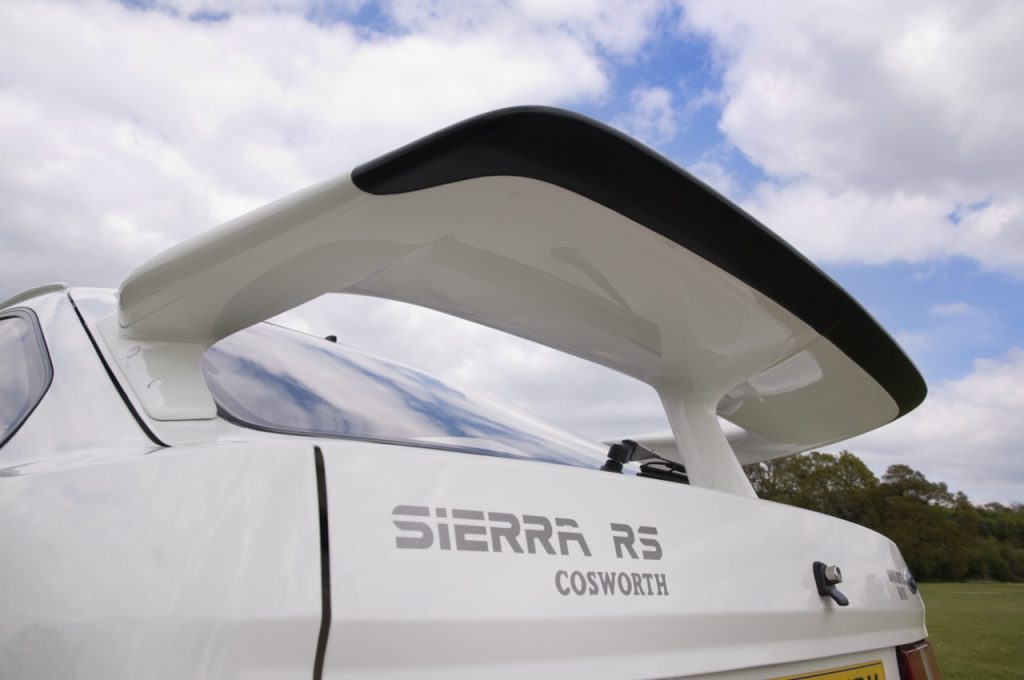
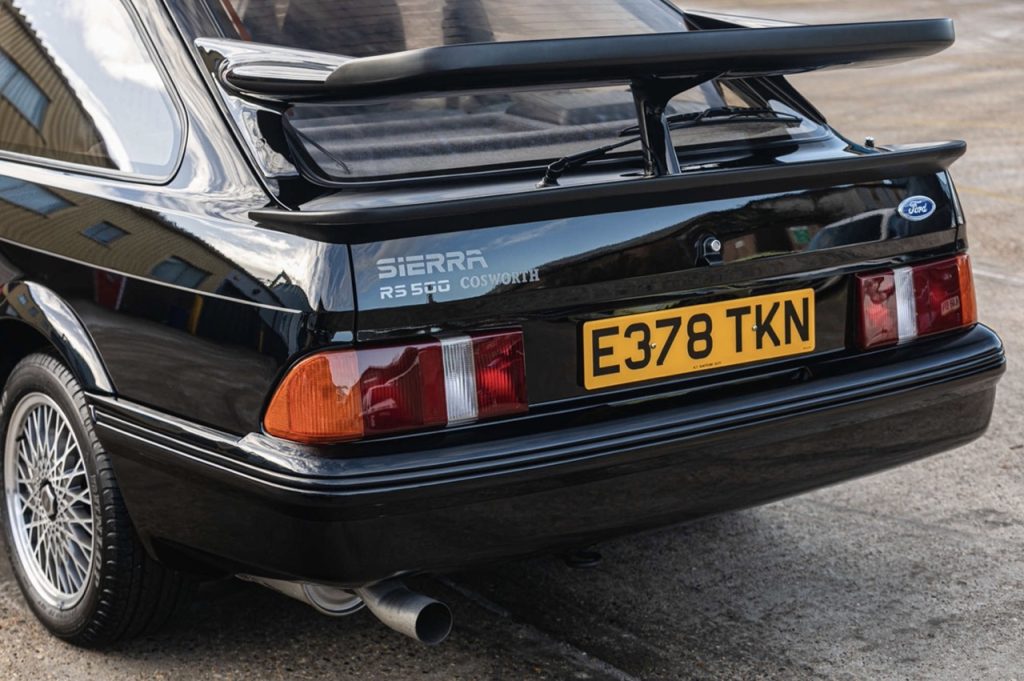
The double rear spoiler is an example. “The original spoiler wasn’t put there to cope with the 150mph of the road car,” said Mansfield. It was to deal with the problem we knew we would have at 180mph-plus on the race track. The spoiler wasn’t engineered for maximum road speed, though we don’t recommend anyone takes it off because it does have a significant effect.”
“All along, Motorsport wanted a spoiler that we never got,” explained Moreton. “Now the two rear spoilers give us an additional 105kg downforce at 100mph and the front spoiler changes give us an additional 20kg over the standard Cosworth.”
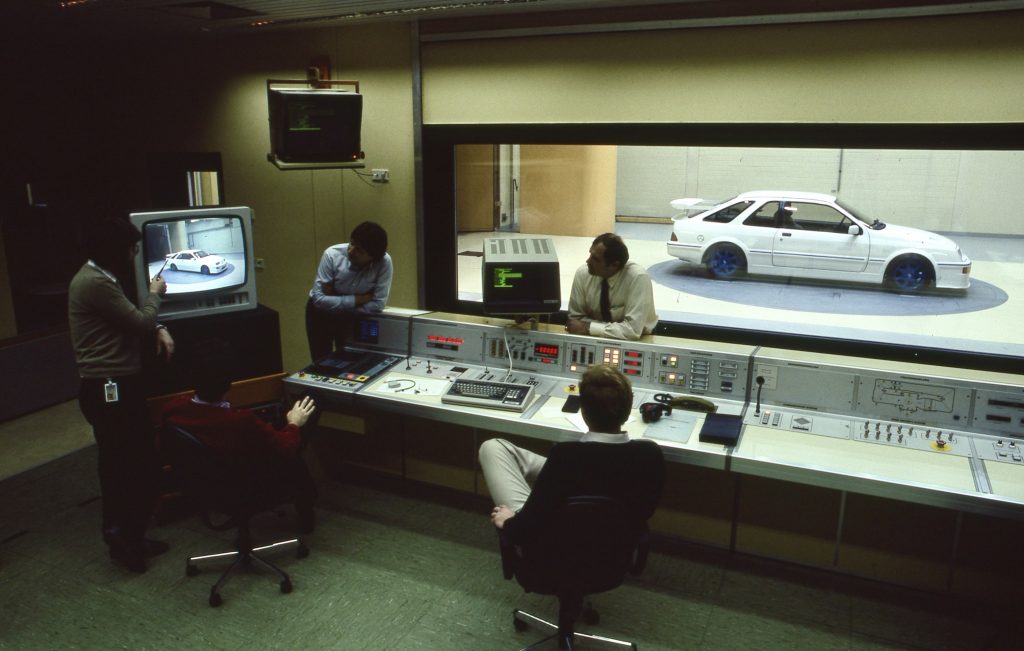
The re-engineering of the spoiler was typically informal and made at the Ford wind tunnel in Cologne. This was all pre-computer-aided design, remember. “Eberhard Braun, a motorsport engineer, took a car and some bits of card and aluminium into the wind tunnel at Merkenich,” Moreton told me. “From there it went to the design studio, where it was properly designed by Tony Grade. The panels were made by Phoenix, a German company.”
The official maximum power of the RS500 was 224bhp, against 204 for the Cossie, but maximum torque was only 3lb-ft more. In race trim, though, we now know the engine will make north of 550bhp in a Group A racer, transforming the quite benign road car into beast. Some crucial bits of “added metal” on the RS500 included a much larger Garrett T31/T04 turbocharger with pressurised bearing lubrication, providing enough air to generate so much power. The turbo went hand-in-hand with a substantially bigger intercooler. It’s the huge turbo and air intake system that dulls low-down punch of the RS500 compared to the original.
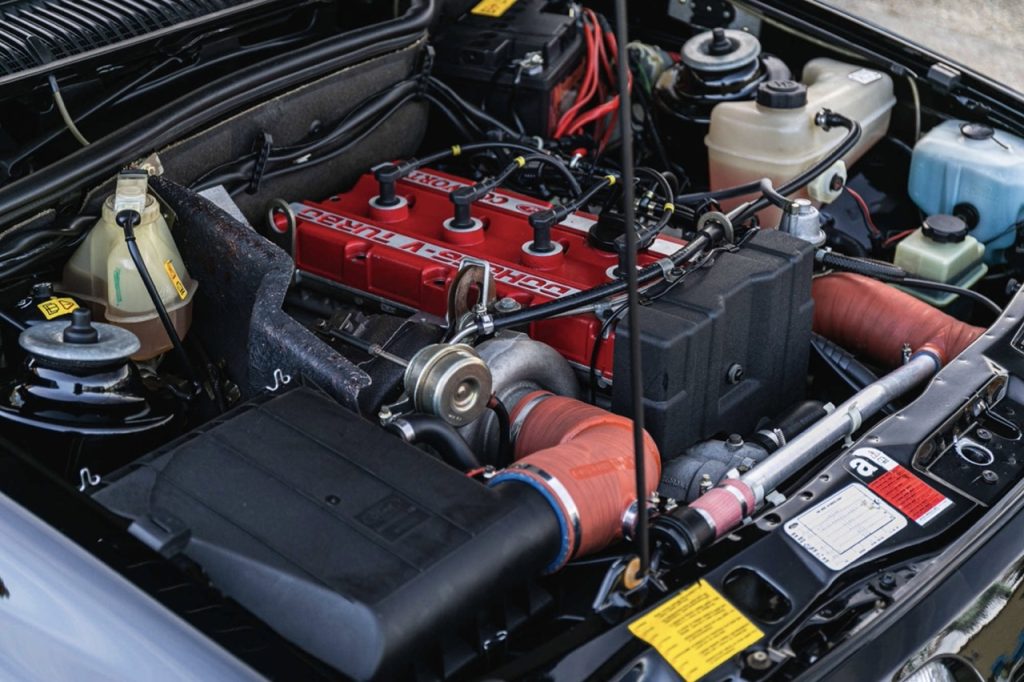
On the road car, the boost remained the same as the Cossie at 9psi, but in the racers the “wick” would be turned up much higher. More fuel would be needed to generate the extra power, so there was a second row of “yellow” fuel injectors (yellow denoting higher capacity) complete with wiring and pipework to feed them, but on the road car these weren’t active. Rear suspension changes would allow racers to change the angle of the semi-trailing arms to alter camber and tracking as the car cornered hard.
The engine’s iron cylinder block was cast with thicker walls surrounding the cylinders. The bolts fastening the cylinder head to it, rather than simply screwing into the top, ran right the way through to prevent head gasket failures at the awesome pressures it would be running. There were even stronger forged pistons, a beefier oil pump, and oil spray cooling for those pistons. All these mods hinted at the massive potential the engine had. “This car was designed to be the winning car in Group A, said Moreton. “And the evolution car has some very significant changes in it. I don’t think anyone realises how significant they are when it comes to reliable, high-power 24-hour racing.” As a road car though, the RS500 lacks the driveability of the original Sierra Cosworth, only getting going at around 4500rpm, compared to 3500rpm, making it feel laggy and less punchy. That compromised flexibility showed up when Performance Car (of which I was the editor at the time) tested it at Millbrook Proving Ground. Against the standard Sierra Cosworth, the RS500 was actually slower from 50mph to 70mph in fourth and fifth gears.
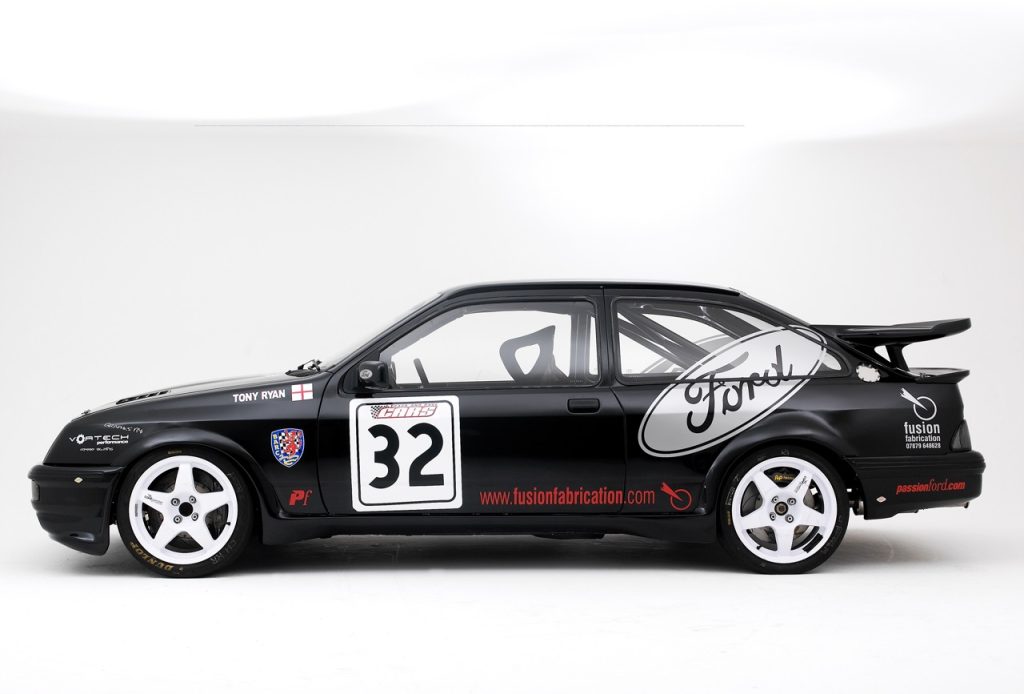
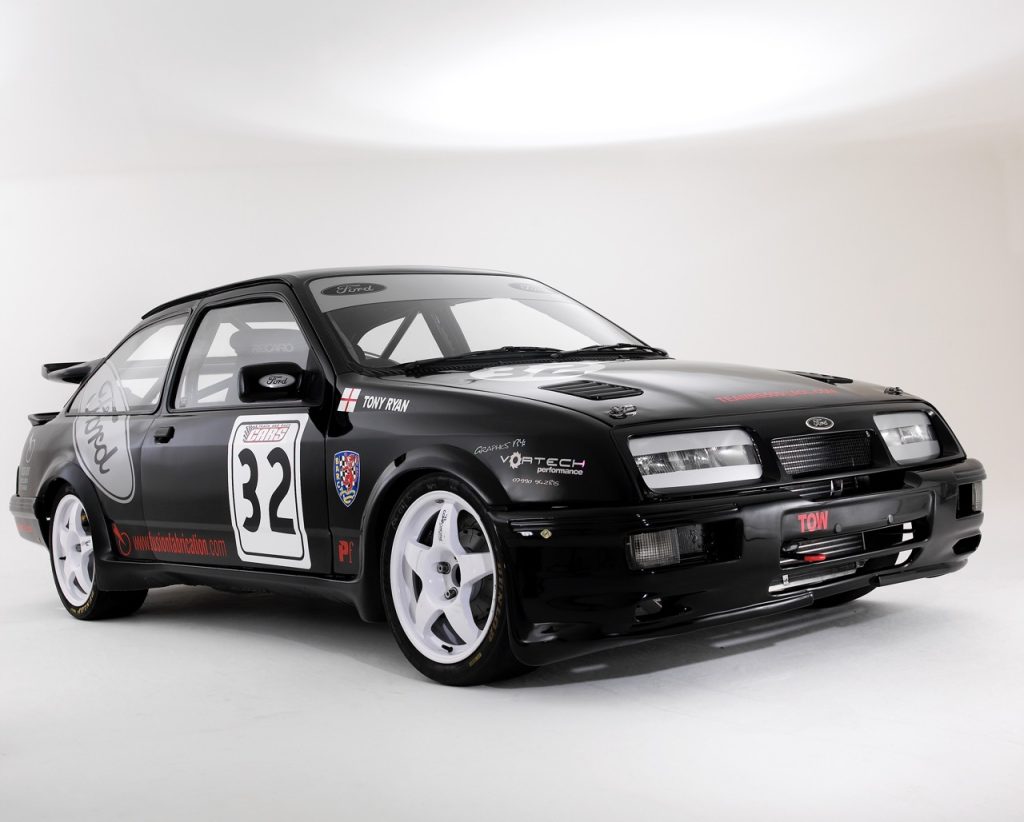
So what of the design? My third stop in the RS500 story was a visit back to Dunton and a chat with Ford of Europe’s director of design in 1987, Andy Jacobson. In those days, Ford exteriors were designed in Germany while interiors were penned at Dunton. His opening gambit at our meeting was, “I have two Cosworths, one here and one in Germany.” At the time, Ford execs travelled regularly between the two sites. “The fantastic thing about having one in Germany is being able to use the car at full throttle, at top speed, without going to jail.” Jacobson was chief designer in the UK when the original Sierra Cosworth was designed and recalled, “If you’re designing a car like the RS200, you know damn well all you’re really going to need is a credit card and a tooth brush. With the Cosworth, you can have your cake and eat it. That, to me, is a really good piece of design.”
If it’s the ultimate driver’s car you’re after, don’t choose the RS500, because the original Sierra Cosworth is that much nicer to drive and looks just as good, if not better, with its cleaner rear end. If it’s rarity you’re after, then the RS500 is the choice for collectors. That said, perhaps the value of the RS500 today is not just about scarcity, but because it didn’t just triumph over the opposition in world class saloon car racing – it pulverised it.
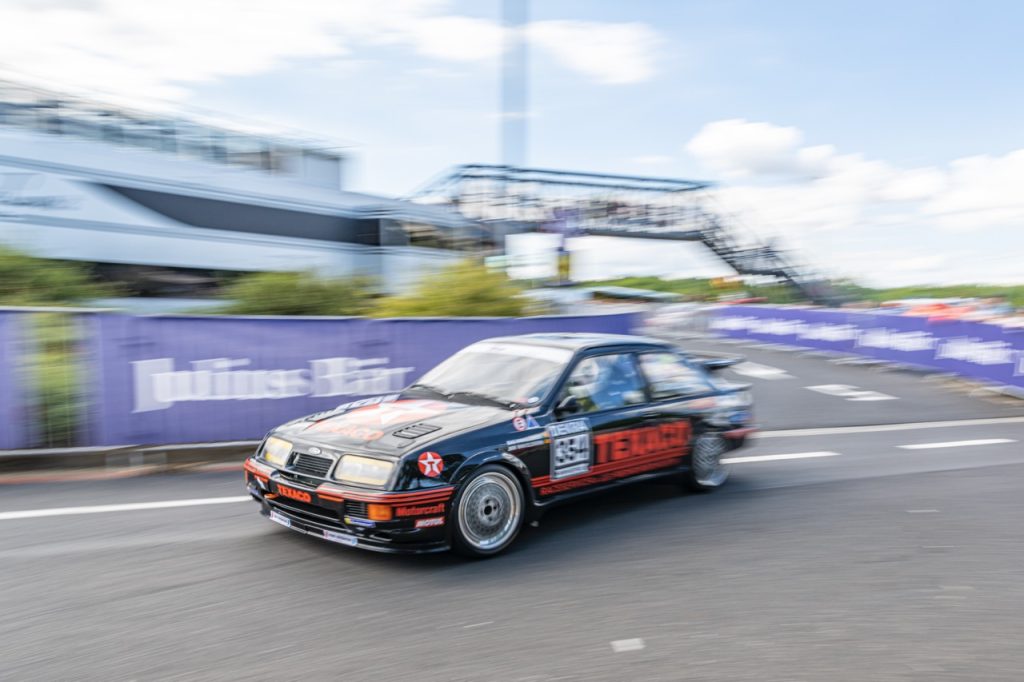
The legend is fuelled by numerous videos of the RS500s at Bathurst and elsewhere on YouTube, which are truly gobsmacking to watch. When I met Rod Mansfield for a story on the Sierra Cosworth RS500’s namesake, the Focus RS500, years later, he pondered those days of the Sierra supercars. “Even before it was built, the intention was for it to be the European Touring Car Challenge champion,” he said. “And it was.” And that pretty well sums up why collectors today are willing to pay north of half a million pounds for an old Ford.







Excellent article.
Sums it all up in an idiot proof way.
And I’m an idiot !
Thanks
Alistair
Slight but major typo: ‘Turner headed the BMW competitions department in the Mini’s heyday when the Cooper S was beating all-comers in world rallying.’
That should likely read ‘BMC’ not ‘BMW’.
Fixed! Good catch, thanks.
Well spotted big difference.